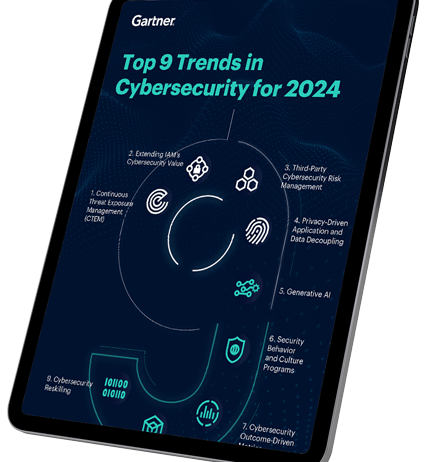
In today’s increasingly digital landscape, cybersecurity has become one of the most critical priorities for government leaders and executives. As cyber threats evolve in complexity and scale, the public sector must be equipped with the skills, knowledge and strategies necessary to protect sensitive information, infrastructure and operations. Understanding emerging cybersecurity trends and implementing robust protocols is essential for ensuring the security of government assets and maintaining public trust.
Emerging Cybersecurity Trends and Their Implications

- Ransomware and malware attacks: Ransomware attacks on government agencies have grown exponentially in recent years, often paralyzing operations and holding critical data hostage. For government leaders, this means heightened vigilance and proactive defenses against malware that can infiltrate systems through phishing attacks or compromised software.
- Cloud security risks: As governments transition to cloud-based infrastructure to increase flexibility and reduce costs, they also face new cybersecurity risks. Data breaches due to misconfigurations, weak access controls, or third-party vulnerabilities can expose sensitive government information.
- Supply chain vulnerabilities: The increasing interconnectivity of government operations with external vendors and contractors poses significant supply chain risks. Compromises in third-party software or hardware can lead to breaches, impacting national security and critical infrastructure.
- Artificial intelligence (AI) in cyber defense: AI is rapidly becoming a key tool in cybersecurity, offering advanced capabilities for threat detection, monitoring, and response. Governments can leverage AI-driven tools to predict cyber threats and automate responses, improving efficiency and reducing human error.
Executive implications: Ensuring swift recovery from attacks without paying ransoms requires well-prepared teams, tested recovery plans and preventive security measures. Implementing strong identity and access management (IAM) and multi-factor authentication (MFA) is essential. Regular audits of cloud environments ensure security and compliance with government protocols. Government leaders must enforce strict security standards for vendors, including vetting, compliance monitoring and conducting regular audits to identify vulnerabilities and mitigate supply chain risks. Balancing AI’s benefits with these risks is key to effective cybersecurity.
Best Practices for Staying Ahead of Cybersecurity Threats
- Comprehensive security training: Cybersecurity awareness is no longer just an IT issue — it’s everyone’s responsibility. Government leaders should ensure that all employees, regardless of their technical expertise, receive regular cybersecurity training that covers basic practices such as recognizing phishing attacks, safeguarding passwords, and reporting suspicious activities.
- Implement zero-trust architecture: A zero-trust approach assumes that threats can come from both outside and inside the organization. This approach requires strict identity verification for every person and device accessing a network. Executives should advocate for adopting zero-trust principles to ensure that sensitive data remains protected, even in the event of a breach.
- Collaboration across agencies: The complexity of modern cyber threats requires collaboration. Government leaders should promote partnerships between federal, state and local agencies, as well as the private sector, to share intelligence, tools and best practices. These partnerships can strengthen collective defense strategies and accelerate responses to emerging threats.
Cybersecurity Essentials for Non-Technical Government Staff
Non-technical staff play a critical role in protecting government assets. Key cybersecurity practices that all employees should know include:
- Strong passwords and MFA: Encourage the use of complex passwords and multi-factor authentication to secure accounts.
- Phishing awareness: Train employees to identify and report phishing attempts, which remain one of the most common ways for attackers to infiltrate government networks.
- Regular software updates: Ensure that all devices and systems are regularly updated to address known vulnerabilities.
- Incident reporting: Create a clear protocol for staff to follow when they encounter potential security breaches or suspicious activity.
Conclusion: A Leadership Imperative
As cybersecurity threats continue to evolve, government executives must remain proactive, adaptive and collaborative in their approach to defending critical operations. By staying informed on emerging trends, investing in cutting-edge solutions like AI, and fostering a culture of cybersecurity awareness among all staff, government leaders can safeguard their organizations and the public they serve.
Dr. Rhonda Farrell is a transformation advisor with decades of experience driving impactful change and strategic growth for DoD, IC, Joint, and commercial agencies and organizations. She has a robust background in digital transformation, organizational development, and process improvement, offering a unique perspective that combines technical expertise with a deep understanding of business dynamics. As a strategy and innovation leader, she aligns with CIO, CTO, CDO, CISO, and Chief of Staff initiatives to identify strategic gaps, realign missions, and re-engineer organizations. Based in Baltimore and a proud US Marine Corps veteran, she brings a disciplined, resilient, and mission-focused approach to her work, enabling organizations to pivot and innovate successfully.





Leave a Reply
You must be logged in to post a comment.